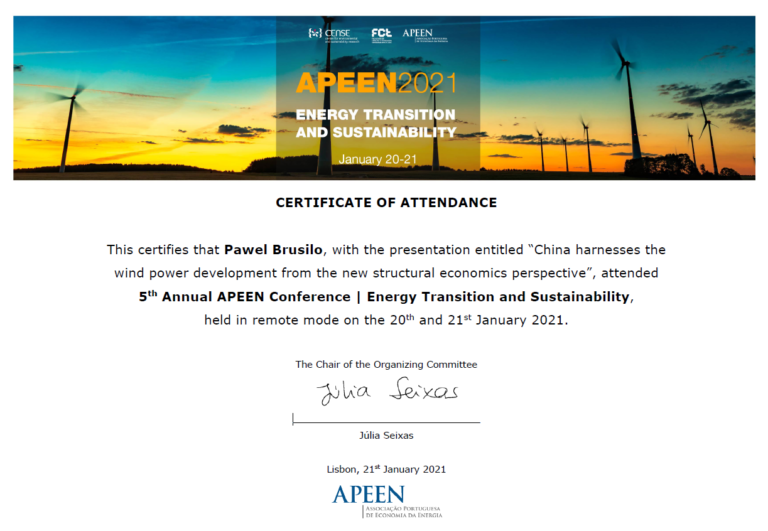
The 5th International APEEN conference (20-21.01.2021) on energy transformation and sustainable development was organized by the Portuguese Energy Economy Association under the patronage of CENSE and IAEE. My speech entitled “China harnesses the wind – Chinese policy towards wind power development from the new structural economics perspective” provided an opportunity for an intensive discussion with participants on the transition of the Chinese wind power sector in the light of the new structural economy assumptions.
The global energy transition requires decarbonization of the Chinese energy sector which is currently on the right track to significantly increase the share of renewable sources in the following decades. The Chinese energy and development policy towards renewables has dynamically evolved, precisely the wind power sector. The pursuit of increasing the installed wind power capacity impacts the various aspects of the wind power sector, including the growth of innovation, production, export, and the public contracts for the construction of the wind farms- both onshore and offshore.
The Chinses approach towards the economic and industrial development policy can be perceived through the perspective of the new structural economics assumptions. The studies of the RCA index show that despite the efforts made by the Chinese authorities and the implemented measures, the wind power sector in China still does not possesses the revealed comparative advantage.
The energy and development policy analysis in the energy transition and growth of selected renewable energy sectors can be done with various methods, such as literature review, desk research, statistical and econometric analysis – especially the regression and time series analysis. It is crucial to diversify the data sources while collecting the data for the research – international and national institutions offer broad databases with detailed indicators that may be used for the analysis.